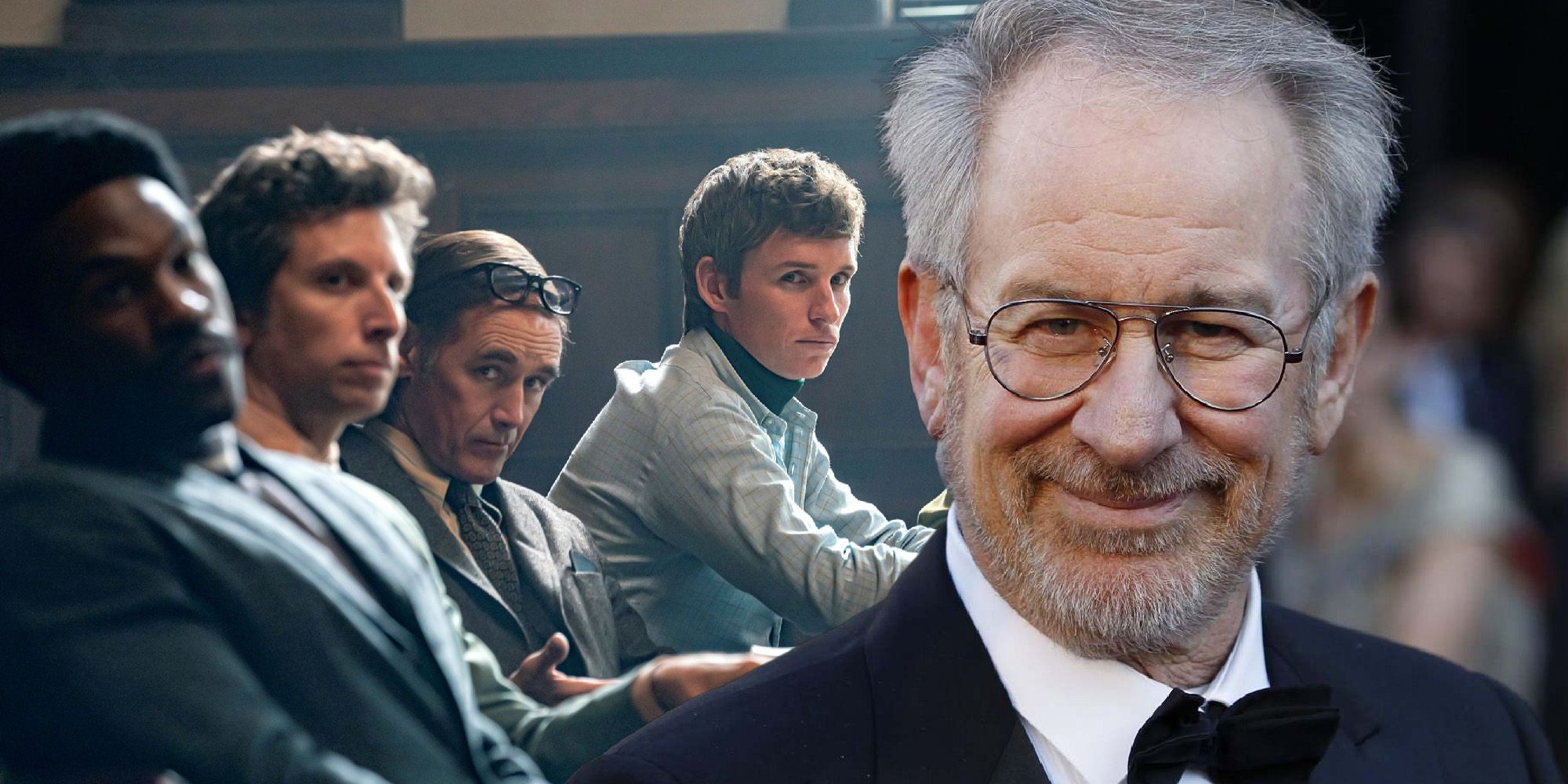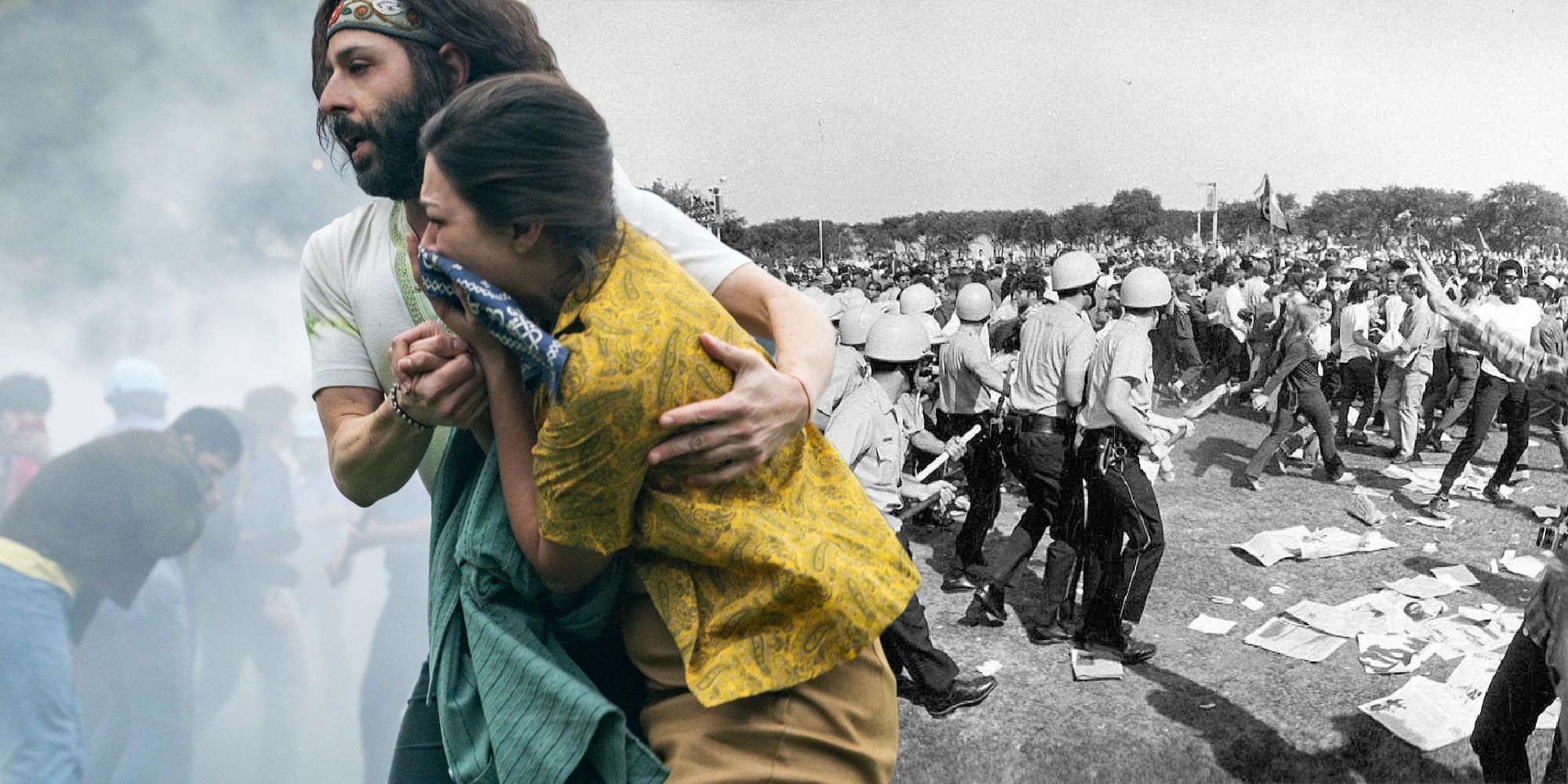
If Steven Spielberg had made The Trial of The Chicago 7, the movie would’ve ended up looking very different from what’s on Netflix today. As it stands, The Trial of The Chicago 7 is Aaron Sorkin’s signature fast-paced political drama that's jam-packed with over two hours’ worth of ideas. Under Spielberg’s direction, though, the courtroom back-and-forth might've turned into a Hollywood blockbuster.
Spielberg once wanted Sorkin to help him write a movie about the 1968 Democratic National Convention and the subsequent riots that took place in Chicago. Spielberg felt that the trial was politically relevant to the time due to how unpopular the Iraq War had become, and he pushed for the film to come out after 2008's US presidential election. Unfortunately, the 2007 Writers’ Guild of America strike, as well as budget issues, put the movie through a production scheduling nightmare and forced Spielberg to drop out as director.
From the start, Spielberg’s vision for The Trial of The Chicago 7 had the makings of a protagonist-centered biopic that resembled Lincoln more closely than The Newsroom. As early as 2006, Spielberg expressed interest in directing the film after Sorkin penned the screenplay. Sacha Baron Cohen had already been cast as Abbie Hoffman, but Spielberg was considering Heath Ledger for Tom Hayden and Will Smith for Bobby Seale. Meanwhile, the other members on trial would be played by relative unknowns. This casting choice makes it likely that Spielberg would choose to focus on one or two major players in the trial, possibly Hayden and Seale, rather than dividing up viewers’ attention in an ensemble-heavy piece. Spielberg took this exact approach with Bridge of Spies in 2015, which followed only two people.

While Sorkin’s direction tends to look at all the moving parts and how they work together, Spielberg’s method usually zones in on one hero defying expectations against all odds, which would likely be Tom Hayden in The Trial of The Chicago 7. It’s possible that, if the movie had been made in time for the 2008 election, the late Heath Ledger would’ve had an opportunity to give his own version of the “Spielberg face”. By giving a dramatic hold and zoom in on a particular character’s face, Spielberg creates a strong empathetic link between the audience and the movie’s protagonist. Viewers saw this in Bridge of Spies between Tom Hanks' James B. Donovan and Mark Rylance's Rudolf Abel. It clarifies who the story’s about and how viewers should feel about them; in The Trial of The Chicago 7, this would be used to center Tom Hayden and his emotional journey throughout the trial.
Whereas Sorkin’s version has several mini-climaxes throughout, Spielberg’s The Trial of the Chicago 7 would likely have a sweeping dramatic swell leading up to Hayden’s decision to read nearly 5,000 names of Vietnam soldiers killed in action to the entire courtroom. (Even though that scene wasn't entirely factual, it drove the point across about the trial still being underlined by the Vietnam War.) Combined with a powerful soundtrack, this focus on one dramatic moment would produce a huge emotional high in the movie. While Sorkin provokes viewers to think, Spielberg encourages viewers to feel. This choice to emphasize the trial’s heart at the end of the movie over its head would have been the major difference in Spielberg’s take on the film.
Though Spielberg’s interest in The Trial of The Chicago 7 re-emerged later in 2018, he encouraged Sorkin to take the directing reins himself. Under Spielberg's eye, the movie might've been like a courtroom drama version of Saving Private Ryan. With Spielberg's or Sorkin's direction, the movie's message and relevance remains strong and clear to this day. It takes a lot to stand up for what's right, but it's always worth it in the end.
from ScreenRant - Feed https://ift.tt/387sC5d

No comments:
Post a Comment